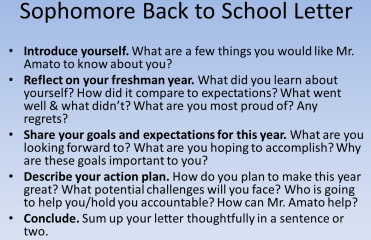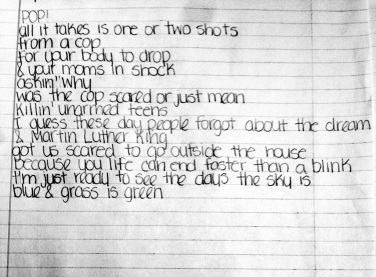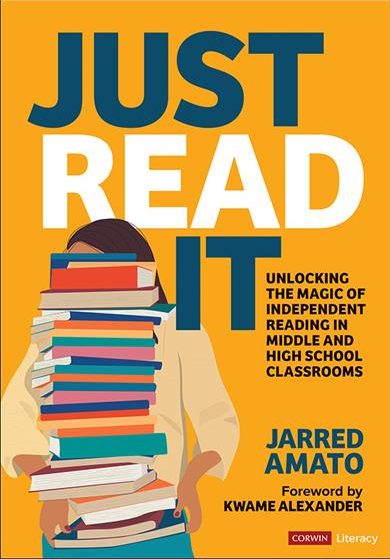This post will discuss the importance of text selection, and share advice for teachers looking to incorporate social justice and/or relevant content into their English classroom. You can also read my previous blog post on how I structure and approach a 90-minute block.
Confession: In eight years of teaching, I have never assigned work from a textbook. I don’t believe in test-prep passages or outdated texts that I know my students will struggle to relate to, connect with, or enjoy, either. My experience is that they generally do more harm than good.
Sure, I’ve had to spend more hours lesson planning, finding and formatting articles, and creating my own questions, but the increased student engagement and achievement has been well worth the sacrifice.
Given that my primary goal is to help students become confident and capable readers, writers, and thinkers, I know that text selection is critical (especially with limited instructional time). That’s why we begin each class period with 15 to 25 minutes of choice independent reading, and why we also read plenty of poetry and relevant non-fiction that almost always gets students thinking more deeply about the world and their place in it.
Don’t get me wrong; the texts we read are still challenging and appropriate. They’re just not curated by a million-dollar textbook company or approved by an English teacher who assigns the same four books every year because that’s what he read in school 30 years ago and because he believes it’s a crime that kids today don’t appreciate the classics.
So, here’s what the first four class periods (we’re on a A/B block schedule) have looked like in my classroom this year:
Homework assignment #1: Students wrote letters that introduced who they were, shared reflections from last school year, stated their goals and expectations, and described their action plan to make this year successful. This was a valuable pre-assessment that allowed me to a) build relationships quickly and b) learn exactly where my students were in their writing. It also let my students know that I value their story, and care about their success and well-being.
Day 1: Students read the NYT article “Read books, live longer?” before completing a 5 Ws and H graphic organizer and writing a concise 2-3 sentence summary as well as a one-paragraph reflection on the value of reading, their reasons for reading, and their thoughts on why I assigned the article.
Days 2-4: I began the year with a mini-unit centered on social justice. Here’s how it has unfolded:
Step 1: We analyzed powerful photos from the summer of 2016
My students discussed and analyzed 10-15 powerful images from the summer, including photos from Brazil, France, Orlando, the DNC and RNC, LeBron James’ championship celebration, Louisiana, Dallas, and others. The last photo we looked at came from the ESPY Awards, where James and three other NBA superstars delivered a powerful call to action speech.
For many students, this was the first time hearing or learning about these events, while for others, it was a chance to educate their classmates. Either way, photos are a great way to activate or build background knowledge. We also practiced citing evidence (what students observed in the photos) and making claims (what students could infer or conclude from the photos).

Step 2: We watched this ESPYs speech from July
The last photo provided a natural transition into the athletes’ ESPYs speech, which I showed on the projector via YouTube. As students watched the speech, they focused on a) what the athletes said and b) how they said it.
Step 3: We re-read and annotated the ESPYS speech
I also made copies of the speech, so students now read through the text, annotating purposefully. I asked students to circle at least 10 words or phrases that had a significant impact on the speech, and make at least four meaningful comments in the margins.
Step 4: We completed the “What/How” graphic organizer
Since was the first time I had introduced the “What/How” graphic organizer, my students and I worked together to complete this assignment. On the top of the page, students identified the speakers, occasion, audience, and purpose before breaking down what each athlete said and how he said it.
Step 5: We created wordless and original poems based on the text
Students then used the key words and themes from the speech to a) create a wordle or artistic representation, and b) write an original poem. This activity allowed students to demonstrate their creativity, and express their own feelings on the subject. They all took immense pride in their art and writing, and the quality of their work (especially the poetry) was phenomenal. Students were dying to share with one another, and it was clear that they had a much better understanding of our world and how we can all make it better.
Step 6: We wrote a mini-essay that analyzed the “what” and “how” of the speech
Students then utilized their graphic organizer to compose a mini-essay that summarized how each athlete contributed to the overall purpose of the speech, and analyzed how each speaker achieved his goal. I set my students up for success by providing them with plenty of models and think-alouds, and posting and reviewing my expectations clearly. Later this week, students will receive feedback on their first draft, and complete a final draft along with a writing checklist to ensure that it meets all requirements.
Homework #2: Students had a choice for this week’s Article of the Week. My freshmen read “How your GPA predicts your income,” while my sophomores chose between the moving column on Simone Manuel and the effects of Jim Crow and the effects of too much TV and chill.
In summary, I know that I need to increase the volume of reading and writing my students do, so here’s a look at what we have already accomplished during the first week and a half of school:
- Checked out a book of their choice from our school library, and read for 15 (freshmen) to 25 minutes (sophomores) each class period.
- A two-page letter outlining their goals and action plan for the year
- A concise article summary and personal reflection on the importance of reading
- At least one original poem (many students were inspired to write more) on the state of America in 2016 from their perspective
- A wordle/artistic representation of an important speech
- A graphic organizer and mini-essay analyzing what the athletes said in their speech and how they said it
- A one-page reflection on a high-interest article of their choice (GPA and income, Simone Manuel and Jim Crow, or Effects of Too Much TV and Chill)
Thanks for reading! As always, feedback welcome!

Thank you for sharing, Jarred! I’ll check back for hyperlinks on your resources! 😉
I added this post to the #1st5days LiveBinder here: http://www.livebinders.com/play/play/873869?tabid=047843f1-686a-04d4-c39e-d8fc8030ec3e
LikeLike
Liz Eskridge posted this yesterday, and I am so excited to read what you’ve been doing! I am a freshman writing teacher at TSU, and my classes read and write a lot about social justice issues, and I am always seeking out ideas of what to read and how to structure my classes. I am pasting something below that I thought may interest you. I entered my students in a writing competition last year for Yes! Magazine, and there is another contest coming up. It is usually open to middle, high school and college students. Just thought I’d throw it out there, and introduce you to Yes! if you haven’t heard of it.
http://www.yesmagazine.org/EdConnectionNews/2016/aug16ed-2/aug16ed-2_web.html
LikeLiked by 1 person